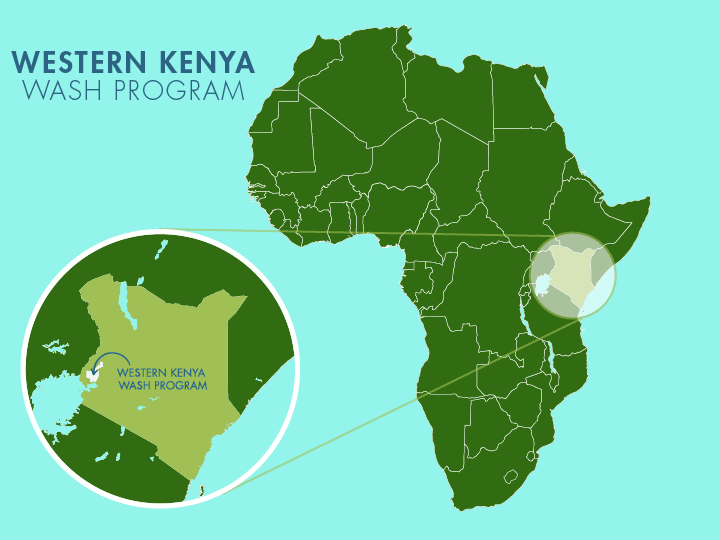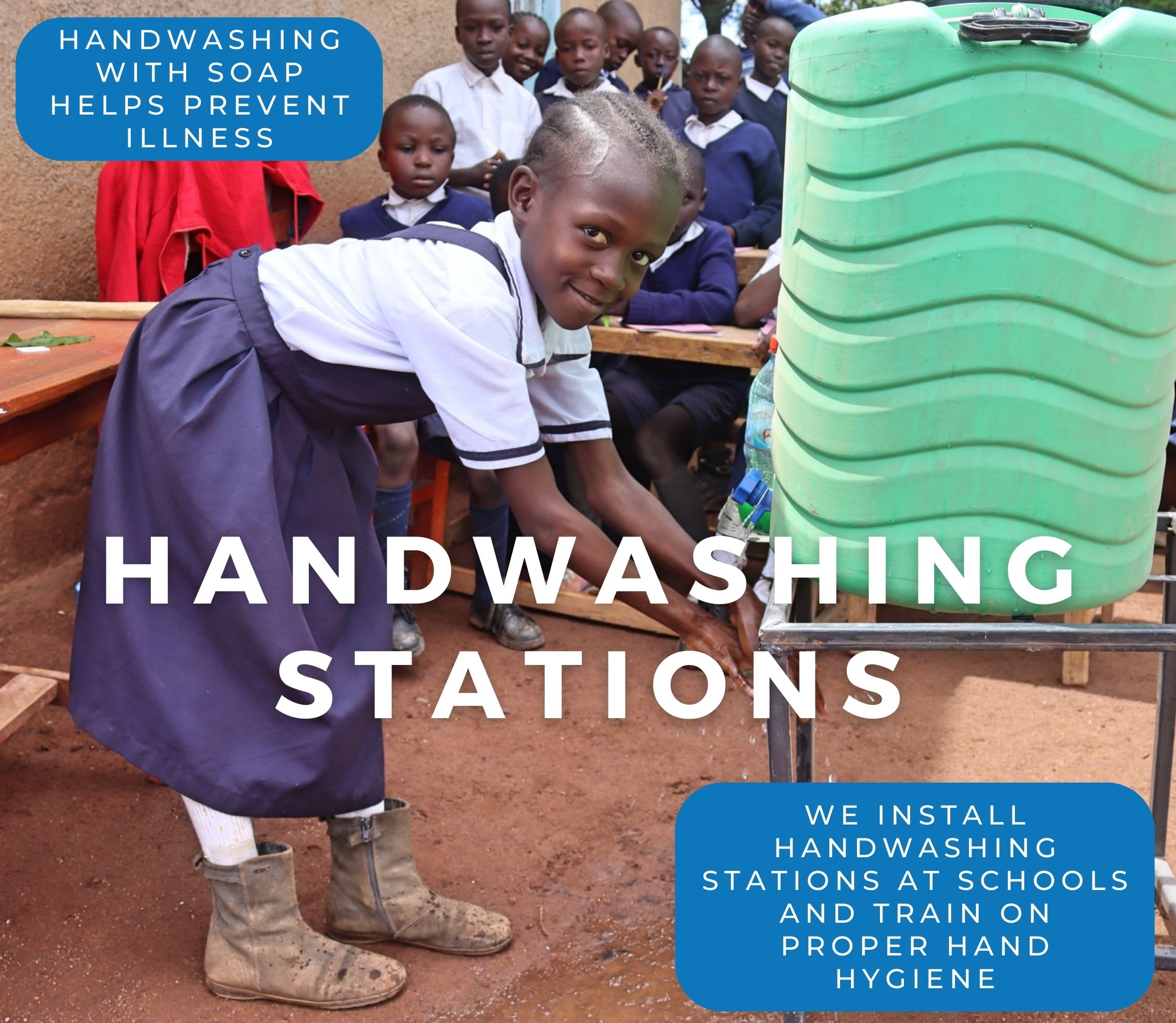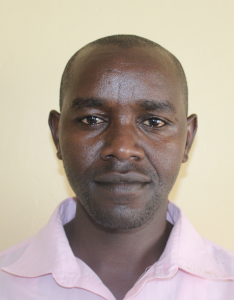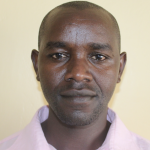The 78 students and staff members of Karandini Vocational School have long struggled with a critical water crisis. Their lack of access to safe, reliable water has compromised the health of students and staff, making it difficult for the school to progress.

The school relies on two main water sources: rainwater collection and surface water from a distant stream. Unfortunately, both of these are contaminated and unsafe.

Rainwater is only available during wet seasons, and the tank is deteriorating, giving it an unpleasant taste, smell, and appearance. When the tank is dry, students are forced to collect water from the faraway stream.

Students carrying water along the busy road.
The surface water from the stream is located over 30 minutes away and can only be accessed via a hazardous road and a path that cuts through rugged terrain. Although this source is contaminated and at times appears milky, students have no alternative.

The stream.
Without better options, everyone is forced to consume contaminated water, resulting in frequent episodes of diarrhea, coughing, and respiratory issues. The burden is especially heavy for students, compromising both their safety and their ability to focus on learning.
Brighton, 17, is understandably frustrated when he has to leave school to collect water, as it means he misses, on average, two hours of learning a day. He has dreams for the future, but due to the current water situation, he's not certain he will attain them.

Brighton.
"Sometimes I feel as if my seniors (teachers and other staff) do not value whatever I am doing [for] them. To an extent, they just disrupt it and send me to fetch water. I view it as interference, especially on my mission at school. I have to stop lessons and go to the river and fetch water to save a situation that requires water for it to move forward, especially our school kitchen, which needs water every day for food to be cooked," Brighton shared.
Brighton goes to collect water because he has to, but it is not easy for him. After making the long trek, he is often delayed even further because others in the community have arrived before him.
"Villagers sometimes think they own the waterpoint, preventing us from accessing it, saying they have important activities to accomplish before allowing us to fetch water. When sand harvesting people happen to be the first at the water source, they will not allow another person to use it until they are done with their activities. I was once chased and told to come back later," Brighton recalled.

Brighton collects water from the faraway stream with classmates.
He misses more valuable time when he suffers from water-related illnesses due to consuming contaminated water and must take time to recover.
"The rain tank is too small for the school and runs dry. Every time water in the tank is exhausted, I end up consuming unsafe water, which makes me sick and unable to concentrate in class. It was a few months ago when I was sick and could not eat food well because there was no appetite. I was suffering from diarrhea, which led to dehydration, and I needed to drink plenty of water. To ease the pain, I was taken to the hospital for medical attention [to] be able to fully recover, and [return] back to school for my studies," Brighton said.
"When the effects [of] disease are extreme, the body becomes weak and sometimes exhausted even [to] move an inch. This automatically leads to [the] inability to actively engage in activities that require attention," Brighton lamented.
Previous efforts by the school to address the water crisis and alleviate the burden on students, such as Brighton, have been unsuccessful.
But we have a plan to change things. Investing in a borehole at Karandini Vocational School would provide the school with a reliable source of clean water throughout the year. It would be transformational, helping to improve students' quality of life and unlock their potential, allowing them to focus on building a brighter future.
Steps Toward a Solution
Schools without reliable, on-premises water access often rely on students to fetch and carry water, leading to rationing and uncertainty about water quality. The water is typically poured into a communal storage tank and used by the entire school. With children carrying water from all different sources, it is also impossible for teachers and staff to know exactly where the water comes from and how safe it is to drink.
A new water point will be located on-premises at the school to ensure accessibility, reliability, and safety for students, teachers, and staff while meeting our school coverage goals. Having water available at the school allows children to drink, wash hands, and use sanitation facilities without leaving school grounds, preventing disruptions to lessons and reducing safety risks. A dedicated source increases water availability, reduces reliance on stored water, minimizes rationing, and ensures confidence in the safety of the water. This means staff and students are healthier, and their lessons aren’t disrupted, contributing to a better education!
Our technical experts worked with the school leadership and local community to identify the most effective solution to their water crisis. They decided to drill a borehole well, construct a platform for the well, and attach a hand pump.
Well
Abundant water often lies just beneath our feet. Aquifers—natural underground rivers—flow through layers of sediment and rock, offering a constant supply of safe water. A borehole well is drilled deep into the earth to access this naturally filtered and protected water. We penetrate meters, sometimes even hundreds of meters, of soil, silt, rock, and more to reach the water underground. Once found, we construct a platform for the well and attach a hand pump. The community gains a safe, enclosed water source capable of providing approximately five gallons of water per minute. Learn more here!
Handwashing Stations
Alongside each water source, we install two gravity-fed handwashing stations, enabling everyone at the school to wash their hands. Handwashing is crucial for preventing water-related illnesses within the school and community. Student “health clubs” maintain the stations, fill them with water, and supply them with soap, which we often teach them how to make.
Latrines
We will construct two Ventilated Improved Pit (VIP) latrine blocks designed to prevent fecal disease transmission. Each latrine features a cement floor, making it easy to use and clean regularly. Three stalls will serve the girls, and three will serve the boys.
School Education & Ownership
Hygiene and sanitation training are integral to our water projects. Training is tailored to each school's specific needs and includes key topics such as proper water handling, improved hygiene practices, disease transmission prevention, and care of the new water point.
To ensure a lasting impact, we support forming a student health club composed of elected student representatives and a teacher. These clubs promote hygiene practices schoolwide and keep handwashing stations well-stocked. This student-led model encourages a sense of ownership and responsibility.
Safe water and improved hygiene habits foster a healthier future for everyone in the school and the surrounding community.

 Borehole Well and Hand Pump
Borehole Well and Hand Pump
 Rehabilitation Project
Rehabilitation Project




















